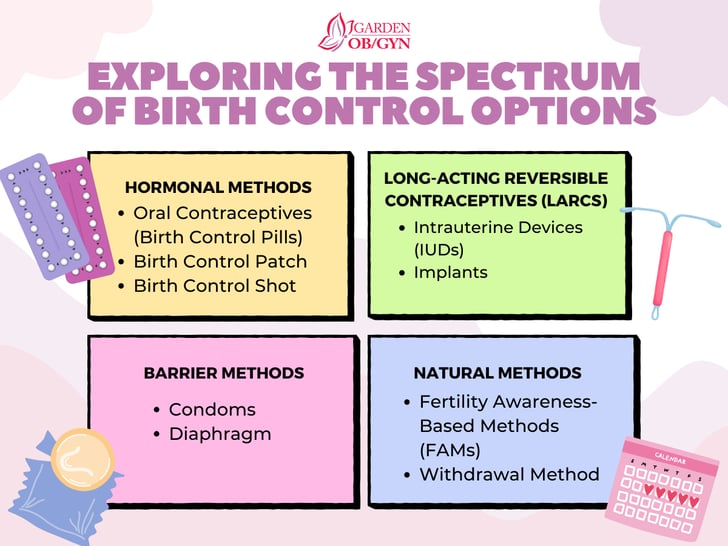Understanding Birth Control Choices
Empower your reproductive choices with a range of birth control options. From hormonal methods to barriers and LARCs, explore mechanisms, efficacy, and considerations for informed family planning.

In the realm of reproductive health, the availability of diverse birth control options empowers individuals to make choices aligned with their unique needs and preferences. From hormonal methods to barrier devices and long-acting reversible contraceptives (LARCs), this article explores the spectrum of birth control options, shedding light on their mechanisms, efficacy, and considerations for those navigating the landscape of family planning.
- Hormonal Methods:
a. Oral Contraceptives (Birth Control Pills): Birth control pills are one of the most common hormonal methods. They typically contain synthetic hormones, estrogen, and progestin, working to prevent ovulation and alter the cervical mucus to impede sperm movement. The pill's effectiveness relies on consistent daily use.
b. Birth Control Patch: The contraceptive patch releases hormones through the skin, providing a convenient alternative to daily pills. Users apply a new patch weekly for three weeks, followed by a patch-free week.
c. Birth Control Shot: The birth control shot, administered every three months, contains progestin to inhibit ovulation and thicken cervical mucus, hindering sperm mobility.
- Long-Acting Reversible Contraceptives (LARCs):
a. Intrauterine Devices (IUDs): IUDs are small, T-shaped devices inserted into the uterus. They can be hormonal (releasing progestin) or non-hormonal (copper). IUDs provide a highly effective, long-term solution, with some lasting up to 10 years.
b. Implants: Subdermal contraceptive implants are small rods placed under the skin, releasing progestin to prevent ovulation. This method offers a long-term solution, typically effective for up to three years.
- Barrier Methods:
a. Condoms: Condoms are a widely accessible and affordable barrier method. They prevent pregnancy by creating a barrier that stops sperm from reaching the egg. Additionally, condoms reduce the risk of sexually transmitted infections (STIs).
b. Diaphragm: The diaphragm is a silicone cup placed in the vagina to cover the cervix, blocking sperm from entering. Used with spermicide, it enhances effectiveness but requires proper fitting and application.
- Natural Methods:
a. Fertility Awareness-Based Methods (FAMs): FAMs involve tracking menstrual cycles, temperature, and cervical mucus to identify fertile periods. While this method requires diligence and consistency, it can be an option for those seeking non-hormonal alternatives.
b. Withdrawal Method: Also known as the "pull-out" method, this involves the male withdrawing before ejaculation. While it is readily available, its efficacy is lower compared to other methods, and it does not protect against STIs.
Conclusion:
The variety of birth control options available today allows individuals to make informed choices about their reproductive health. Consulting with healthcare professionals is crucial to selecting the most suitable method based on individual health, preferences, and lifestyle. With ongoing advancements in contraceptive technology, the landscape of family planning continues to evolve, offering more choices and improved accessibility for everyone.
































